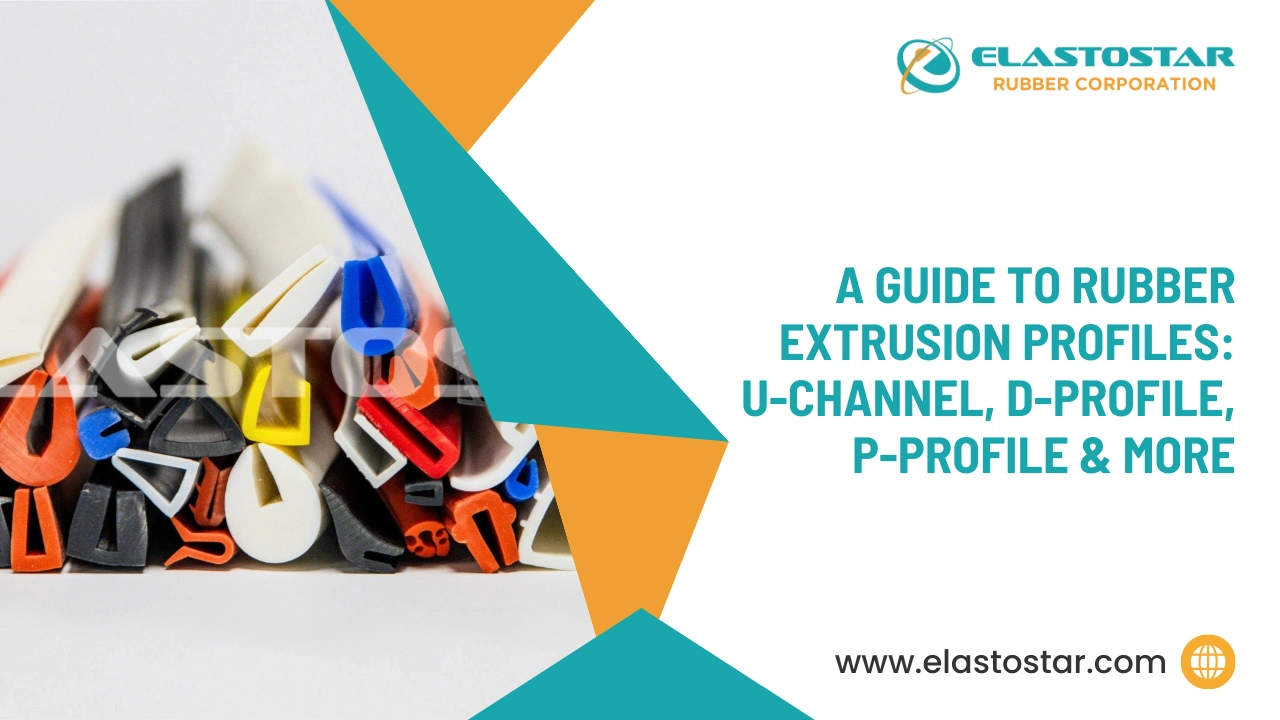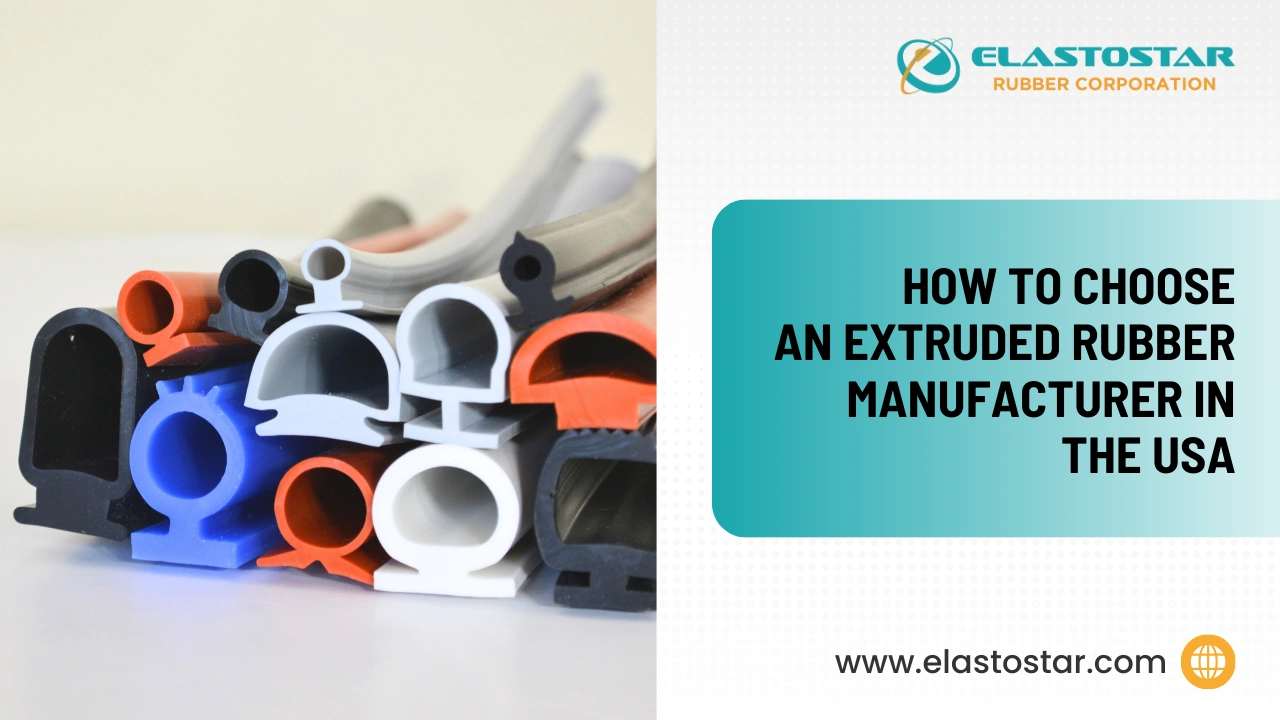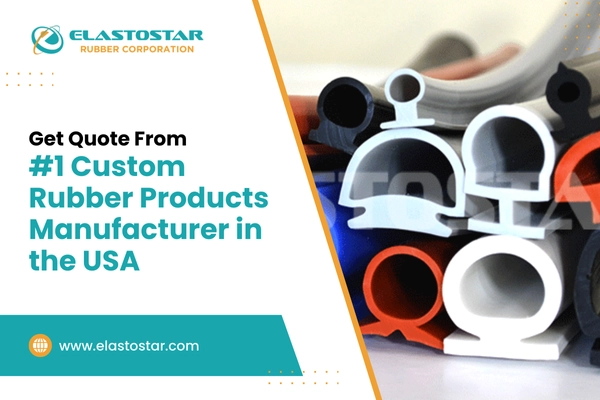Silicone is a widely used material known for its flexibility, durability, and heat resistance. However, not all silicone is created equal. While general silicone is used in industrial applications, food-grade silicone is designed to meet FDA compliance and food safety standards.
It is free from harmful chemicals and is safe for direct food contact. Commonly found in kitchenware, baking tools, baby products, and medical applications, it has non-toxic, BPA-free, and heat-resistant benefits.
This blog will explore the differences between general and food-grade silicone, including their manufacturing, safety, applications, and certifications.
What is Silicone?
Silicone Rubber is a synthetic polymer derived from silica, oxygen, and other elements. It is known for its exceptional durability, flexibility, and resistance to extreme temperatures. Unlike traditional rubber, it remains stable in high heat and freezing temperatures, making it highly versatile.
Silicone rubber materials are waterproof, chemical-resistant, and non-reactive, and they are widely used in industrial, medical, and consumer applications.
Common Applications of Silicone
Silicone is used in various industries, including:
- Construction – Sealants, adhesives, and insulation.
- Automotive & Aerospace – Engine components, gaskets, and tubing.
- Electronics – Protective coatings and keypads.
- Medical & Healthcare – Extruded rubber tubing, gaskets, and seals used in medical devices.
Read More – Silicone Rubber: Where It Comes From
What is Food-Grade Silicone?
Food-grade silicone is a non-toxic, BPA-free material specifically designed for direct contact with food. Unlike regular silicone, it is odorless, resistant to bacterial growth, and does not leach harmful chemicals.
This makes it ideal for kitchenware, baking tools, food containers, and medical applications. Its heat resistance and flexibility ensure its integrity even at extreme temperatures.
Certifications & Compliance
Silicone must meet strict certifications and regulatory standards to be classified as food-safe.
- FDA-approved silicone (U.S.) – Ensures the material is free from harmful substances.
- LFGB (Germany), EU 1935/2004 (Europe) – Guarantees compliance with food safety regulations.
- USP Class VI & USP Class VI Section 88 & 87 Pass – Verifies that the material meets biocompatibility standards for medical and food applications.
Why is Certification Important?
Food safety regulations prevent contamination by ensuring that silicone rubber strips, seals, and gaskets do not leach chemicals into food. Certified silicone food-safe materials are trusted in food processing and storage applications.
Elastostar Certification
At Elastostar Rubber Corporation, we take quality and safety seriously. Our food-grade silicone materials undergo rigorous testing and meet FDA compliance, LFGB, EU 1935/2004, and USP Class VI certifications. This ensures our customers receive high-quality, food-safe silicone for various applications.
Read More – What is FDA Silicone Made Of?
Differences Between General Silicone and Food-Grade Silicone
Not all silicone is created equal. While general silicone is widely used in industrial applications, it may contain fillers and hazardous chemicals for food contact.
In contrast, food-grade silicone is specifically manufactured to meet FDA compliance and other food safety standards, ensuring it is non-toxic, BPA-free, and suitable for direct contact with food and beverages.
| Aspect | General Silicone | Food-Grade Silicone |
| Composition | It may contain industrial fillers | Free from BPA, phthalates, and toxic additives |
| Safety | Not suitable for food contact | FDA and food safety compliant |
| Usage | Industrial applications (seals, gaskets, automotive) | Kitchenware, baby products, medical tubing |
| Heat Resistance | Varies; may degrade under high heat | Withstands high and low temperatures |
| Certification | No strict regulation | FDA, LFGB, and EU-approved |
What are the Applications of Food-Grade Silicone?
Food-grade silicone is a versatile and safe material used across multiple industries due to its durability, flexibility, and non-toxic properties.
Its ability to handle high and low temperatures makes it an ideal choice for food processing, medical applications, and industrial use.
Food Industry
- Used in baking molds, kitchen utensils, food storage containers, and rolling mats.
- It provides a non-stick surface, making it perfect for cooking and baking applications.
- Resistant to stains and odors, ensuring long-lasting performance.
Medical & Healthcare
- Found in baby bottle nipples, medical tubing, and silicone o-ring seals.
- Used in hygienic applications where biocompatibility and non-toxicity are critical.
- Meets FDA and USP Class VI standards for medical-grade safety.
Industrial Applications
- Used in FDA-approved seals and gaskets for food processing equipment.
- Commonly found in custom extrusions, extruded rubber products, and sealing applications.
- Provides long-lasting, heat-resistant, and chemical-resistant properties for industrial use.
Read More– Why FDA-Approved Silicone Rubber is Preferred for Food Industry Gaskets & Seals
What are the Benefits of Using Food-Grade Silicone?
Food-grade silicone is superior to traditional materials due to its safety, durability, and versatility.
| Benefit | Description |
| Health & Safety | Non-toxic, BPA-free, and FDA-compliant, ensuring no harmful chemicals leach into food. |
| Temperature Resistance | The smooth, non-stick surface makes it perfect for baking and cooking, and it’s dishwasher-safe. |
| Durability & Sustainability | Reusable, long-lasting, stain-resistant, and eco-friendly, reducing plastic waste. |
| Non-Stick & Easy to Clean | The smooth, non-stick surface makes it perfect for baking and cooking and is dishwasher-safe. |
How to Identify Food-Grade Silicone Products?
Ensuring that silicone products are food-safe is essential for health and safety.
1. Check for Certifications
Look for FDA, LFGB, and EU compliance marks on packaging or product descriptions. These certifications confirm that the silicone meets strict food safety standards and does not contain harmful chemicals.
2. Physical Characteristics
Food-grade silicone is soft, flexible, and odorless. It should not turn white when stretched—if it does, it likely contains fillers that make it unsafe for food contact.
3. Common Testing Methods
A straightforward way to test silicone is the Pinch Test. Bend or pinch the material—if it turns white, it contains fillers and is not food-safe. High-quality FDA-approved gaskets and food-safe silicone products will pass this test without discoloration.
Certified and adequately tested silicone ensures no contamination in food or medical applications.
About Elastostar Rubber Corporation
At Elastostar Rubber Corporation, we specialize in custom rubber extrusions and FDA-compliant silicone solutions for food, medical, and industrial applications. Our extruded gaskets, seals, and silicone rubber products are designed to meet strict food safety standards, ensuring durability, flexibility, and long-term reliability.
As a trusted silicone product manufacturer, we focus on innovation, compliance, and superior craftsmanship to deliver high-quality, food-safe solutions.
Contact us today to find the perfect solution for custom extruded silicone, gaskets, or rubber seals.
Recommended Reads
- What Makes Silicone Rubber Popular for Use in the Healthcare Industry
- Top Applications of Silicone Rubber in the Aerospace Industry
- Comparing Different Types of Rubbers
Conclusion
Choosing the right silicone product is vital for safety, durability, and compliance in food and medical applications.
Food-grade silicone differs from general silicone as it is free from harmful chemicals, BPA-free, and FDA-compliant, making it safe for direct food contact. It undergoes strict manufacturing and testing to meet food safety standards and remains non-toxic and reliable.
These differences help in selecting high-quality, food-safe silicone for various uses. Always check for FDA-compliant rubber materials and safety certifications for quality. Food-grade silicone provides health protection and product integrity across industries.
FAQs
Is silicone safe for food contact?
Yes, but only food-grade silicone is safe for direct contact with food. It is BPA-free, non-toxic, and FDA-compliant, ensuring no harmful chemicals leach into food. For high-quality, food-safe silicone solutions, choose elastostar.
Is all 100% silicone food grade?
No, not all 100% silicone is food-grade. Some general silicones contain fillers and additives that are unsafe for food contact. Always check for FDA, LFGB, or EU certifications to confirm food safety compliance.
How do I distinguish ordinary silicone from food-grade silicone?
Food-grade silicone is soft, flexible, odorless, and does not turn white when stretched. To test, perform a Pinch Test—if the material turns white when bent, it contains fillers and is not food-safe. For certified food-grade silicone products, Elastostar offers FDA-approved silicone rubber tubing suitable for various food processing applications.
What is FDA-approved silicone?
FDA-approved silicone meets strict food safety standards set by the U.S. Food and Drug Administration (FDA). It is free from harmful chemicals and safe for food storage, cooking, and medical applications. If you need FDA-approved silicone products, contact us for customized solutions that meet your specific requirements.
How can I tell if a product is made of food-grade silicone?
Look for certifications like FDA, LFGB, or EU 1935/2004 compliance marks. Genuine food-grade silicone does not emit odors, discolor, or degrade under heat.
Is food-grade silicone different from regular silicone?
Yes, food-grade silicone is manufactured without harmful fillers and undergoes strict quality testing to ensure safety and durability for food contact. Regular silicone may contain industrial additives and is not tested for food safety.




